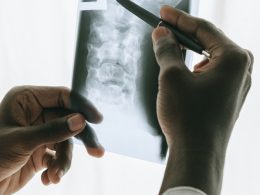Have you ever stood up too quickly and felt your heart pounding or your head feel off? Maybe it passes in a few seconds, but sometimes, it keeps happening. You might even notice your blood pressure numbers go up right after standing. That sudden spike isn’t just random, it could be your body trying to keep up with changes in posture. In this blog, we’ll talk about why this happens, what it might mean, and when to take it seriously.
We’ll also explain what is orthostatic hypertension? a condition where your blood pressure increases when you go from sitting or lying to standing. Let’s look into the causes, signs to watch, and what you can do to manage the issue better.
Why Does Standing Up Affect Your Blood Pressure?
Your body is smart. When you’re lying down or sitting, your heart doesn’t have to work as hard to push blood around. But the second you stand; gravity pulls blood toward your legs and lower body. To balance this, your body tightens blood vessels and increases heart rate. This keeps blood flowing to your brain and other important organs.
However, this process doesn’t work the same for everyone. For some people, the blood vessels overcompensate. Instead of just keeping blood pressure steady, they push it higher than normal. This is when a spike in blood pressure can happen just from standing up.
Moreover, your nervous system plays a big role. If it sends the wrong signals or reacts too strongly, your body ends up increasing pressure more than needed. This overreaction can make you feel strange or even worried.
What Is Orthostatic Hypertension (And How Is It Different From Other Conditions)?
Most people have heard of low blood pressure when standing. That’s called orthostatic hypotension. It’s when your pressure drops, and you feel dizzy or faint. But what we’re discussing here is the opposite.
Orthostatic hypertension means your blood pressure rises when you stand up. Doctors usually define it as an increase of at least 20 points in your upper (systolic) number. That’s quite a jump from just standing.
Furthermore, the symptoms aren’t always obvious. You might feel fine or just a little tense. Others might notice chest discomfort, shortness of breath, or jitteriness. Because this condition isn’t as well-known, it’s often overlooked. But it matters, especially if it happens often.
Older adults and people with high blood pressure already are more likely to have it. It also shows up in those with nervous system issues or diabetes.
Read More: https://worldwidedigest.com/yoga-and-meditation-for-better-sleep-and-headache-relief/
Could Your Daily Habits Be Making Things Worse?
It’s easy to think this kind of blood pressure spike is out of your control. But in many cases, your habits play a big part.
For example, dehydration is a common trigger. When you don’t drink enough water, your blood volume drops. This makes your body work harder when you stand, leading to pressure changes.
Medication can also be a factor. Some over-the-counter drugs, like cold medicines with stimulants, can increase blood pressure. Certain prescribed medications might do the same. It’s important to check with your doctor if you notice the issue started after a medication change.
In addition, stress can cause your blood vessels to tighten more than usual. If your mind is anxious, your body responds by increasing blood pressure, especially in moments of quick movement.
High salt intake is another hidden problem. While salt helps balance fluid, too much of it can push your pressure higher, especially during posture changes.
Lastly, some medical conditions may cause nervous system imbalances. If your brain doesn’t tell your blood vessels how to act correctly when you stand, they might go into overdrive.
When Should You Actually Be Concerned?
Not every rise in blood pressure is an emergency. But if it keeps happening, or brings symptoms, it’s time to pay attention.
Some of the signs include:
-
Fast or irregular heartbeat
-
Feeling faint or dizzy right after standing
-
Headache that starts suddenly
-
Tightness in the chest
-
Shaky or anxious feelings without a clear reason
These symptoms might seem minor, but they can be your body’s way of saying something that’s not right. Moreover, if you feel these things often, or they happen more than once a week, you shouldn’t ignore them.
Doctors usually take these symptoms seriously, especially if they appear along with other high blood pressure signs. The key is to track when and how often they occur. That makes it easier to understand the pattern and find the root cause.
What Are Your Options If This Keeps Happening?
The good news is, there are ways to manage it. Some people see changes just by adjusting to a few daily habits.
First, start with hydration. Drinking enough water keeps your blood volume steady, helping your body adjust better when you stand.
Second, avoid standing up too fast. Giving your body a moment to catch up can reduce sudden spikes. If you’re lying down, sit first, then stand slowly.
Third, look at your salt intake. If you eat lots of salty snacks or canned foods, it might be pushing your pressure higher than needed.
Additionally, monitor your pressure regularly. A home blood pressure monitor can help you track what happens when you change positions. Keep notes of any symptoms, times of day, and what you were doing. This helps your doctor see the full picture.
Medical treatment is an option, too. If your spikes are frequent or severe, your doctor might adjust your meds or test conditions affecting your nervous system. Sometimes, small changes in your treatment plan make a big difference.
What Will Your Doctor Do About It?
If you decide to visit a doctor, knowing what to expect can help you feel more prepared.
Your doctor may ask detailed questions about your symptoms. They might take your blood pressure in different positions, lying down, sitting, and standing, to see how it changes.
In addition, they could run tests like an ECG or even blood work to check how your heart and kidneys are doing. If the cause isn’t clear, you may be referred to a specialist, like a cardiologist or neurologist.
Moreover, your doctor may look into your lifestyle, medications, and diet to spot potential triggers. You might be asked to keep a blood pressure diary for a few days. Doctors often focus on finding out whether these pressure changes are random or part of a larger pattern. That’s why your input—like a log of readings—is so important.
Conclusion
A sudden rise in blood pressure after standing up can be more than just a momentary reaction. For some, it’s linked to orthostatic hypertension, a condition where the body raises blood pressure more than it should during posture changes. While this might seem harmless at first, repeated spikes can signal a deeper issue that needs attention.
Fortunately, small lifestyle adjustments like staying well-hydrated, standing up slowly, and lowering salt intake can help reduce these episodes. If symptoms continue or become uncomfortable, it’s important to speak with a healthcare professional. Your doctor might explore further options, including clinical trials exploring high blood pressure patterns, to better understand your case and find the most effective solution.
Paying attention to these signs now can help prevent bigger health concerns later. Listening to your body and acting early always leads to better outcomes.












